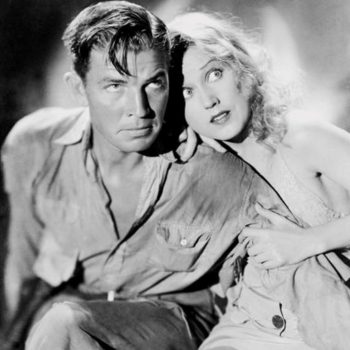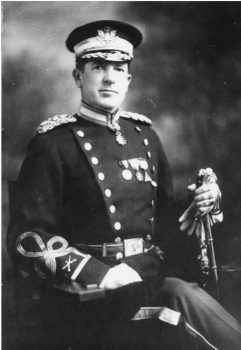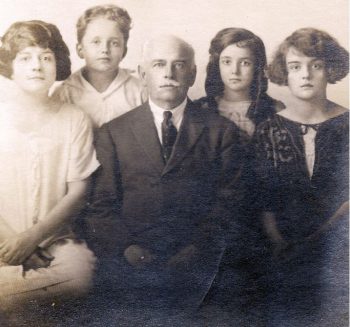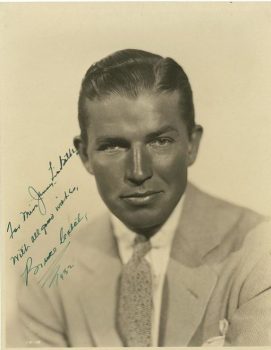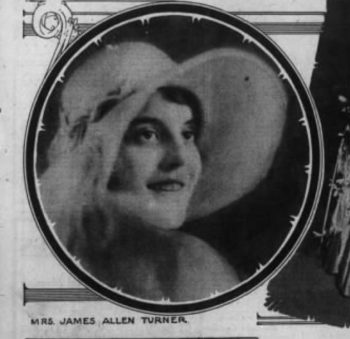Anyone who has seen the 1933 film King Kong may remember the actor Bruce Cabot who played rival to a giant gorilla for the romantic affections of Fay Wray. The role was his big break, made only two years and seven pictures into a Hollywood career that lasted 40 years.
Yet, before stardom, he struggled a bit to find his place in life — which must have been a disappointment to his father, a most capable and ambitious man.
Cabot’s father, Major Etienne De Pelissier Jacques Bujac, Sr., was a decorated Spanish American War veteran, as well as, a very successful attorney, cattleman, and mining expert. A descendant of “an old and prominent Hugeunot family,” Bujac was born in Baltimore County, Maryland, in Catonsville, attending local schools, before earning a degree from Cumberland School of Law in Nashville.
By the time his first son was born in 1904, Bujac had located to New Mexico, when it still was a Territory, to oversee his cattle ranch at Carlsbad. He named his son, Etienne De Pelissier Jacques Bujac, Jr. — later to be known as, Bruce Cabot.
Perhaps because of Major Bujac’s Tennessee connection, he sent his son to Monteagle where he graduated from the Sewannee Military Academy in 1921, then enrolled in the University of the South. However, young Jacques didn’t complete his college degree. He dropped out and reportedly launched upon a succession of jobs which included being “a sailor, an insurance salesman, oil worker, surveyor, and prize fighter; he also sold cars, managed real estate, and worked at a slaughterhouse.”
Somewhere along the way, perhaps while visiting family in Catonsville, Jacques met a graduate of St. Timothy’s School in that town. She was Grace Mary Mather-Smith of Chicago, Oakland, Florida, and Columbia, Tennessee.
Grace Mary was the oldest of three children born to Charles Frederic and Grace Anna Mather-Smith. Mather-Smith, a descendant of Cotton Mather, was an enormously-wealthy paper manufacturer who also owned citrus groves in Florida. The Mather-Smiths built West Orange Country Club in Oakland, among their many other contributions to the community.
Jacques’s courtship with the rich young debutante apparently was brief for on New Year’s Day, 1927, when he was 22 and Grace Mary was 17, they were wed. Mrs. Mather-Smith described the event in her memor:
Orlando was agog for a week before the ceremony and on New Year’s Day, their entourage was escorted through Orlando behind a detail of motor police, while the fire bells and whistles welcomed them along their way. Theirs was the first marriage to be consummated in the Episcopal Cathedral in Orlando.
A local Orlando reporter observed that the bride was presented a simple gold band that had belonged to the groom’s great-great grandmother, a citizen of Paris.
A Baltimore newspaper mentioned, “The ceremony was followed by a wedding breakfast and reception at the Orlando Country Club, after which the couple left for Daytona, from whence they took an airplane to Cuba…The couple will be at home after a month of travel at the Lake Shore Drive Hotel in Chicago,”
Unfortunately, although the union produced a daughter (Grace Jennifer Bujac), the marriage was nearly as brief as the courtship. By 1929, Jacques had retreated to Carlsbad to live with his father. On the 1930 census, his occupation was listed as salesman for a paper manufacturer. Presumably, this was a job provided by his father-in-law and, in view of the impending divorce, soon to be terminated.
Yet, the young man’s career prospects made a dramatic upturn in 1931 when he met the movie producer David O. Selznick at a Hollywood party. Overnight, Etienne De Pelissier Jacques Bujac, Jr. became Bruce Cabot.
Meanwhile, on May 30, 1930, Grace Mary married a Columbia, Tennessee bank teller James Allen Turner in “a beautiful ceremony in the garden of her parents’ home in Columbia.” Speaking of which, Mrs. Mather-Smith’s connection to Maury County was through her Kincaid grandparents who had settled in the area after the Civil War.
Incidentally, the Mather-Smith house still stands on West 7th Street and was the boyhood home of my good friend Richard Courtney.
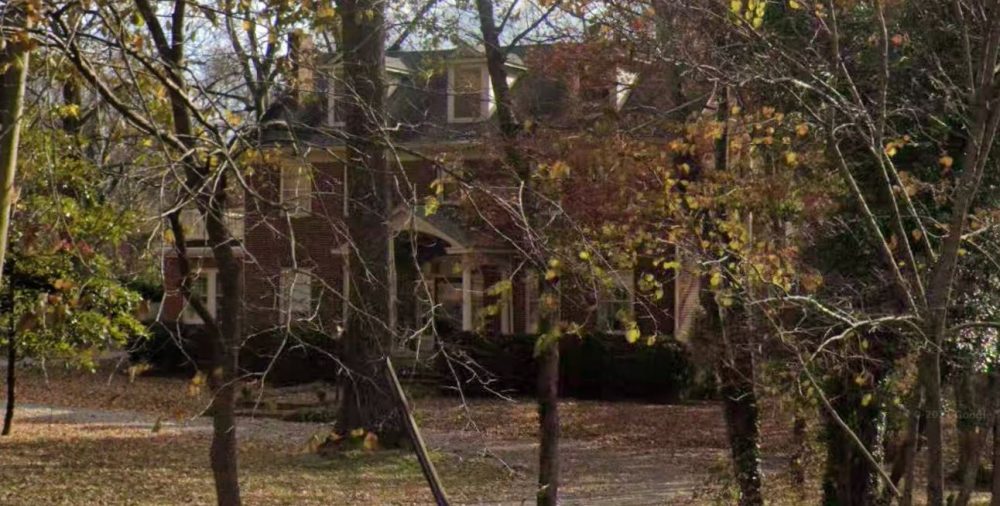
Happily, Grace Mary’s second marriage was a great success and James Allen and she moved to Highland Park, Illinois where he was a partner in a, you guessed it, paper manufacturing firm.
On the other hand, as the years rolled by, Bruce Cabot’s good fortune began to fade. Bad publicity from another divorce didn’t help. His second wife, the actress Adrienne Ames, complained to the press that Cabot preferred the bachelor life and often would stay away from home for days. “He’s made me a nervous wreck,” she proclaimed.
He gradually moved from leading roles to supporting parts in films before enlisting in the U.S. Army Air Forces in December of 1942. Although it was a very admirable decision to join the war effort at 38 years old, his service record was somewhat controversial:
He was as an Air Transport Command operations officer at el Aouina, Tunis from July to November of 1943.
It is alleged from Counter Intelligence Corps documents that Cabot became a courier for a smuggling ring run by high-ranking Air Transport Command officers to arbitrage Middle Eastern gold prices.
Cabot (real name Lt. De Bujac), was apprehended in Cairo in November of 1943 and after an investigation posted to the remote desert outpost of Atar in Mauritania, where he did odd jobs.
Cabot left the service on July 19, 1944 and resumed his movie career, but good roles became harder and harder to find — especially after his perceived betrayal of his once-good-friend Errol Flynn in 1953.
It’s a long sordid story but suffice to say, Cabot sued Flynn which led to the swift physical, financial, and cinematic decline of his friend.
However, regardless of the film industry’s near unanimous condemnation of Cabot, he had one friend who stuck with him — the Duke, John Wayne. For years, John Wayne cast his buddy in his movies, eventhough occasionally the actor was too old or otherwise unsutiable to play the parts. The wise old Indian tracker Sam Sharpnose in Big Jake or the way-too-old Col. Morgan in The Green Berets are two roles that LEAP to mind.
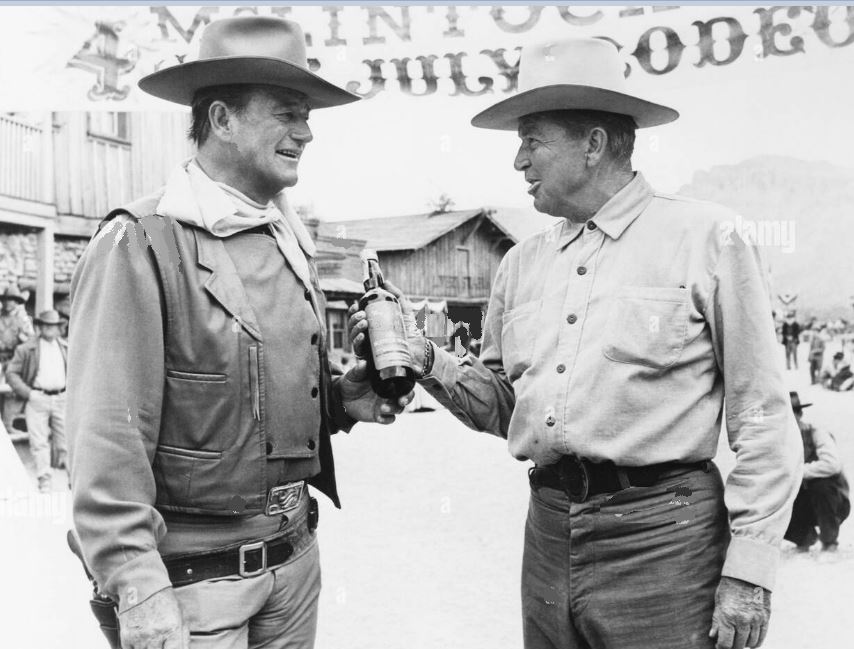
Yet, somehow, the actor labored on year after year. His last role was in the blockbuster James Bond movie, Diamonds Are Forever. The film was released December 14, 1971 and, six months later, Bruce Cabot died of lung cancer at the Motion Picture Country Home.
After 40 years in show business, he left behind an estate of $28,000.
His body was sent back to Carlsbad to be buried in the family plot near his parents. The marker reads, Etienne De Pelissier Bujac, Jr.. Actor “Bruce Cabot.”


